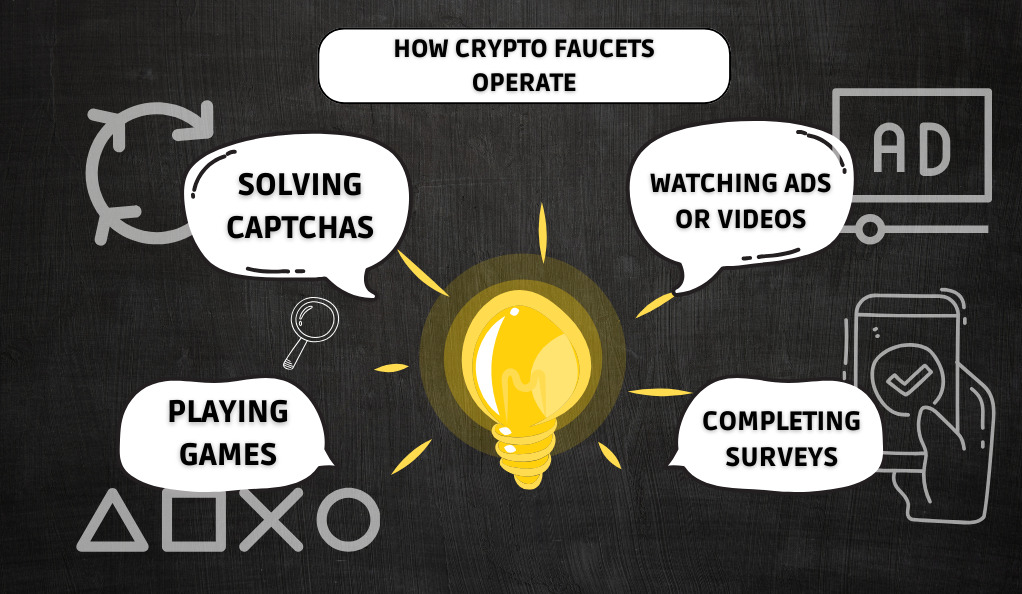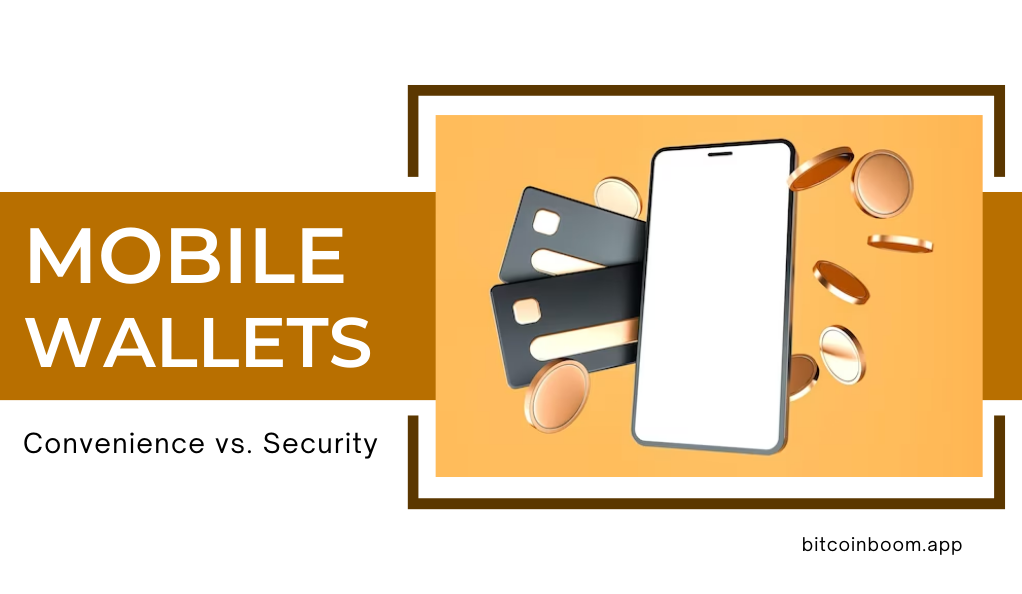In the vast and ever-evolving world of cryptocurrencies, there exists a unique and intriguing mechanism known as a “cryptocurrency faucet.” At its core, a cryptocurrency faucet is a digital platform designed to distribute small amounts of cryptocurrency to its users, often for free. But what exactly are these faucets, and why have they garnered such attention in the crypto community? Let’s delve deeper.
What are Crypto Faucets?
A cryptocurrency faucet can be likened to a dripping tap, but instead of water, it “drips” cryptocurrency. Originating from the early days of Bitcoin, these faucets were introduced as a way to incentivize and introduce newcomers to the concept of digital currency. By offering minute amounts of cryptocurrency, often referred to as “drips” or “rewards,” faucets allow users to get a taste of the crypto world without any initial investment.
| Term | Description |
|---|---|
| Cryptocurrency | A digital or virtual form of currency that uses cryptography for security. |
| Faucet | A digital platform distributing small amounts of cryptocurrency, often for free or in exchange for tasks. |
| Drips/Rewards | Minute amounts of cryptocurrency given to users as incentives by the faucet. |
The Allure of “Free Crypto”
The idea of receiving “free crypto” might sound too good to be true, and in some cases, it might be. However, the primary objective of these faucets isn’t just to distribute free tokens but to serve a larger purpose. They act as educational tools, helping users understand how transactions work, how wallets function, and how the broader ecosystem operates. By interacting with faucets, users can learn the basics of the crypto world in a risk-free environment.
The Purpose Behind Crypto Faucets
As we’ve established, cryptocurrency faucets are more than just platforms for free digital currency. Their inception and continued existence serve several critical purposes in the broader context of the cryptocurrency ecosystem.
Educating Users About Digital Assets
One of the primary objectives of crypto faucets is education. For many, the world of cryptocurrencies is a maze of complex jargon, intricate processes, and a steep learning curve. Faucets simplify this by providing a hands-on experience. By interacting with these platforms, users can learn:
- How to set up and manage a digital wallet.
- The process of sending and receiving transactions.
- The dynamics of transaction fees in the crypto world.
- The importance of security measures such as private keys and two-factor authentication.
In essence, faucets act as a sandbox environment, allowing users to experiment and learn without the fear of losing any real money.
Providing Access to Financial Services for the Unbanked
Cryptocurrencies, at their core, aim to democratize finance. They offer a decentralized alternative to traditional banking systems, making financial services accessible to everyone, regardless of their socio-economic status or geographical location. Faucets play a role in this mission.
For populations with limited access to banking services, faucets can serve as an entry point into the world of digital finance. By earning small amounts of cryptocurrency, these individuals can start participating in the global economy, making transactions, saving, or even investing.
Promoting New Cryptocurrencies
With thousands of cryptocurrencies in existence and more emerging regularly, new coins or tokens often use faucets as a promotional tool. By distributing a new cryptocurrency through faucets, creators can:
- Increase awareness and adoption of the new token.
- Foster a community around the cryptocurrency.
- Encourage users to transact, trade, or hold the new token.
How Crypto Faucets Operate

Having understood the purpose and significance of cryptocurrency faucets, it’s essential to delve into their operational mechanics. How do these platforms function, and what ensures their smooth operation? Let’s explore.
Registration and Task Completion
Most cryptocurrency faucets require users to register before they can start earning rewards. This registration process is typically straightforward, often requiring just an email address and a password. Once registered, users can begin to interact with the platform’s offerings.
Tasks vary from one faucet to another, but common activities include:
- Solving Captchas: A simple task where users solve captchas to prove they are human.
- Watching Ads or Videos: Faucets often partner with advertisers. Users watch ads or videos and earn rewards in return.
- Playing Games: Some faucets offer simple online games. Users earn crypto rewards based on their performance or time spent playing.
- Completing Surveys: Users provide their opinions on various topics in exchange for cryptocurrency rewards.
Earning and Claiming Rewards
Upon completing tasks, users earn rewards, which are typically credited to their account on the faucet platform. These rewards, while small, can accumulate over time.
Most faucets have a minimum withdrawal limit. Once users reach this threshold, they can transfer their accumulated cryptocurrency to their personal wallets. It’s essential to note that while some faucets allow immediate withdrawals, others might have a waiting period or specific withdrawal days.
The Role of Micro-Wallets
A significant aspect of the faucet ecosystem is the micro-wallet. As the name suggests, a micro-wallet is a digital wallet designed to hold small amounts of cryptocurrency. Why the need for such a wallet? Given the transaction fees associated with blockchain operations, transferring tiny amounts of cryptocurrency directly to a personal wallet might not be feasible. Micro-wallets address this issue.
When users earn rewards on a faucet, these rewards are credited to their micro-wallet. Once they reach a certain threshold, they can transfer the funds from the micro-wallet to their primary cryptocurrency wallet.
Different Types of Cryptocurrency Faucets
The world of cryptocurrency faucets is as diverse as the broader crypto ecosystem. With a myriad of cryptocurrencies available, faucets have evolved to cater to various digital assets, each with its unique features and offerings. Let’s delve into the different types of cryptocurrency faucets and what sets them apart.
Ethereum Faucets
Ethereum, being the second-largest cryptocurrency by market capitalization, has a plethora of faucets dedicated to it. These faucets reward users with Ether (ETH) for performing tasks like:
- Solving captchas
- Mining on specific websites
- Completing challenges or playing games
Popular Ethereum faucet platforms include Ethereum-faucet.org, Fire Faucet, and Dutchy CORP.
Bitcoin Faucets
Bitcoin, the pioneer and the most well-known cryptocurrency, naturally has the most extensive range of faucets. Users can earn rewards in satoshis, the smallest unit of Bitcoin (BTC), by:
- Viewing ads
- Playing games
- Participating in surveys
Some renowned Bitcoin faucet platforms are FreeBitcoin, Cointiply, and BitFun.
Litecoin and Monero Faucets
Litecoin (LTC) and Monero (XMR) are other popular cryptocurrencies with dedicated faucets. For instance:
- Moon Litecoin rewards users with free LTC for activities like streaming videos.
- Monerofaucet.info offers rewards redeemable for Monero tokens every hour.
Zcash Faucets
Zcash (ZEC) faucets reward users with free Zcash for completing simple tasks. Platforms like Globalhive offer Zcash rewards every 20 hours, with immediate withdrawal options to user wallets.
Tron Faucets
For enthusiasts of Tron (TRX), faucets like Xcolander.com provide an opportunity to earn free TRX. The amount of TRX earned often depends on specific activities on the platform, such as spinning a wheel.
Diversifying Your Crypto Portfolio with Faucets
While faucets are a great way to earn small amounts of various cryptocurrencies, they also offer users an opportunity to diversify their crypto portfolio. By engaging with different faucets, users can accumulate a mix of cryptocurrencies, spreading their risk and potential rewards across various digital assets.
Risks Associated with Crypto Faucets

While cryptocurrency faucets offer an enticing opportunity to earn free digital assets, like all things in the digital realm, they come with their set of risks. It’s crucial for users to be aware of these potential pitfalls and exercise caution when navigating the faucet landscape. Let’s explore some of the common risks and how to mitigate them.
Scams and Fraudulent Faucets
The most prevalent risk in the faucet ecosystem is the presence of scam platforms. These fraudulent faucets lure users with the promise of high rewards but fail to pay out once the user reaches the withdrawal threshold. Often, these platforms earn revenue from user interactions, such as ad clicks, but have no intention of sharing the profits.
Tips to Avoid Scams:
- Research: Before engaging with a faucet, conduct thorough research. Look for user reviews, forum discussions, and any red flags.
- Test with Small Amounts: Initially, try to reach the withdrawal threshold quickly to test the platform’s legitimacy.
- Avoid Over-the-Top Promises: If a faucet promises rewards that seem too good to be true, they probably are.
Phishing Attacks
Some malicious entities create faucet websites that mimic legitimate platforms to steal user information. These phishing sites can capture login credentials, personal information, and even wallet details.
Tips to Prevent Phishing:
- Check the URL: Ensure the website’s URL matches the legitimate platform’s address.
- Use Bookmark: Bookmark trusted faucet websites and always access them through the bookmark to avoid fake sites.
- Never Share Private Keys: No legitimate faucet will ever ask for your wallet’s private keys.
Hidden Malware and Adware
Certain faucets might try to install malware or adware on your device. This software can track your activities, steal information, or inundate you with unwanted ads.
Tips to Stay Protected:
- Use Antivirus Software: Ensure you have reliable antivirus software installed and regularly updated.
- Avoid Downloading Files: Be wary of faucets that ask you to download files or software.
- Use Ad Blockers: Consider using ad blockers when navigating faucet websites to prevent malicious ads.
Should You Use a Crypto Faucet?

The allure of earning free cryptocurrency, coupled with the educational opportunities faucets provide, makes them an attractive proposition for many. However, like all ventures, it’s essential to weigh the pros and cons to determine if engaging with crypto faucets aligns with your goals and circumstances. Let’s delve into the considerations.
Pros of Using Crypto Faucets
- Educational Value: For crypto novices, faucets provide a hands-on introduction to the world of digital currency. Users can learn about transactions, wallets, and the broader crypto ecosystem without any financial risk.
- Free Cryptocurrency: While the amounts are small, consistent engagement with faucets can lead to a decent accumulation of various cryptocurrencies over time.
- Diversification: By using multiple faucets, users can earn a variety of cryptocurrencies, diversifying their digital asset portfolio.
- Community Engagement: Many faucets have active communities where users can discuss trends, share tips, and learn from experienced members.
Cons of Using Crypto Faucets
- Time-Consuming: The tasks required to earn rewards, such as watching ads or solving captchas, can be time-consuming relative to the amount earned.
- Potential Scams: As discussed, the faucet landscape has its share of fraudulent platforms that can waste users’ time or, worse, compromise their security.
- Minimal Earnings: The rewards from faucets are typically minimal. For those looking for substantial earnings, faucets might not be the best avenue.
- Market Volatility: The value of cryptocurrencies can be highly volatile. The tokens earned today might decrease in value tomorrow.
Who Should Consider Using Crypto Faucets?
- Crypto Newbies: Those new to the world of cryptocurrency can use faucets as a risk-free introduction.
- Students or Individuals with Spare Time: If you have some free time and are looking for a passive way to earn a bit of crypto, faucets can be a viable option.
- Hobbyists: For those who enjoy the gamified tasks many faucets offer, such as playing games or participating in challenges, faucets can be a fun pastime.
Who Might Want to Skip Crypto Faucets?
- Experienced Crypto Enthusiasts: Those well-versed in the crypto world and looking for substantial earnings might find faucets too time-consuming for the rewards they offer.
- Individuals Short on Time: If you have a busy schedule, the time investment required for faucets might not justify the returns.
Conclusion
Cryptocurrency faucets, in their essence, represent the democratizing spirit of the digital currency world. They offer a bridge for newcomers, allowing them to experience the nuances of cryptocurrency without the initial financial burden. While the allure of earning free tokens is undeniable, it’s the educational aspect of these platforms that stands out. They demystify the often complex realm of crypto, making it more accessible to the masses.
However, with opportunity comes responsibility. As users venture into the world of faucets, they must tread with caution. The digital landscape, while abundant with possibilities, also harbors risks like scams and phishing attacks. It’s a delicate balance of seizing opportunities while staying vigilant. In this ever-evolving crypto journey, faucets serve as both a beacon for beginners and a reminder for seasoned enthusiasts about the core values of accessibility and education in the decentralized world.





